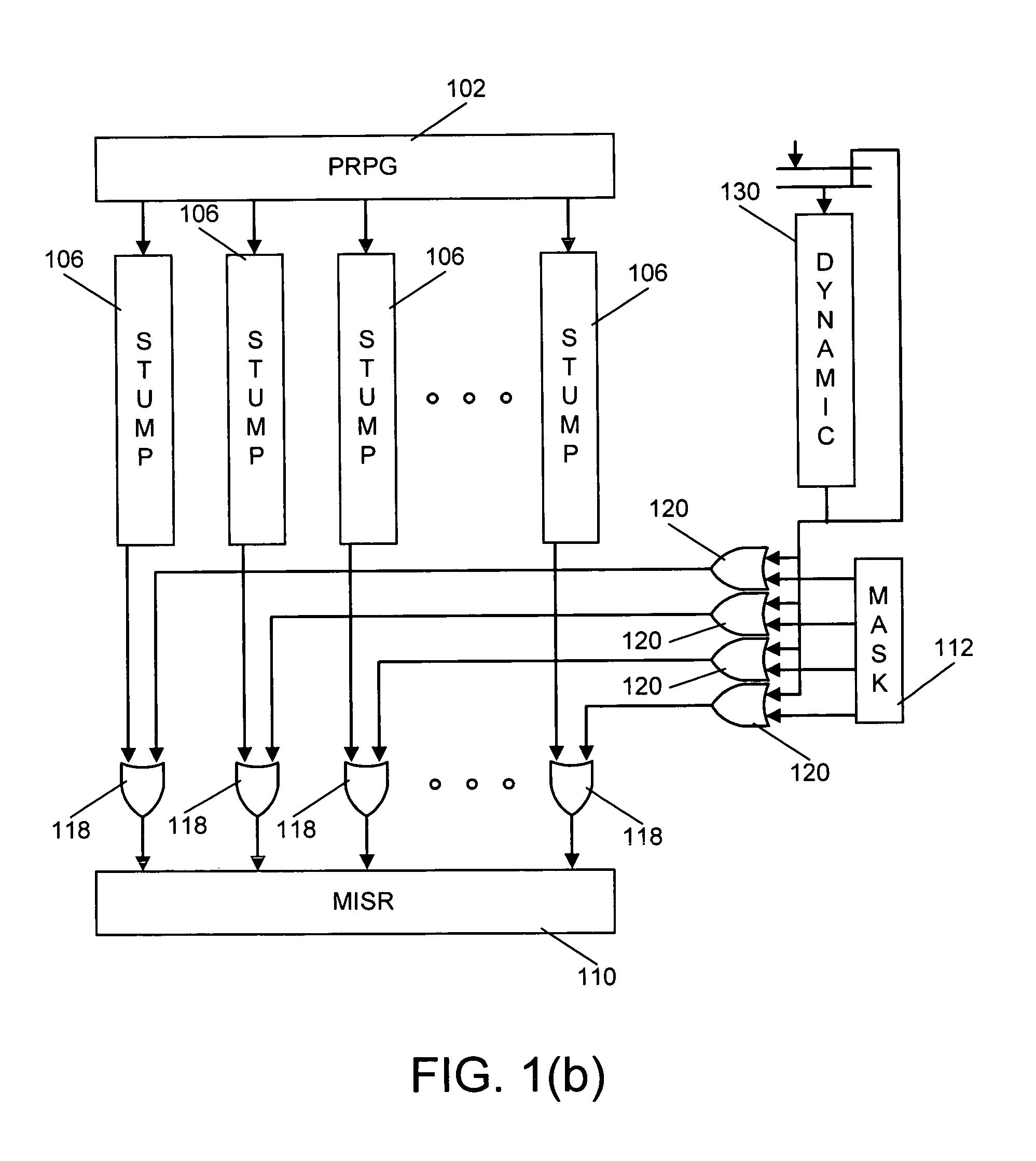Method of improving logical built-in self test (LBIST) AC fault isolations
a self-testing and self-diagnosis technology, applied in the field of built-in self-testing, can solve problems such as one limitation cone, and achieve the effect of improving the self-diagnosis of the built-in self-diagnosis
- Summary
- Abstract
- Description
- Claims
- Application Information
AI Technical Summary
Benefits of technology
Problems solved by technology
Method used
Image
Examples
Embodiment Construction
[0026]Turning to the figures, wherein like numbers denote like parts throughout, FIG. 2 depicts a block diagram of a data processing system in which the present invention may be implemented. Data processing system 200 employs a peripheral component interconnect (PCI) local bus architecture. Although the depicted example employs a PCI bus, other bus architectures such as Accelerated Graphics Port (AGP) and Industry Standard Architecture (ISA) may be used. Processor 202 and main memory 204 are connected to PCI local bus 206 through PCI bridge 208. PCI bridge 208 also may include an integrated memory controller and cache memory for processor 202. Additional connections to PCI local bus 206 may be made through direct component interconnection or through add-in boards. In the depicted example, local area network (LAN) adapter 210, SCSI host bus adapter 212, and expansion bus interface 214 are connected to PCI local bus 206 by direct component connection. In contrast, audio adapter 216, g...
PUM
 Login to View More
Login to View More Abstract
Description
Claims
Application Information
 Login to View More
Login to View More - R&D
- Intellectual Property
- Life Sciences
- Materials
- Tech Scout
- Unparalleled Data Quality
- Higher Quality Content
- 60% Fewer Hallucinations
Browse by: Latest US Patents, China's latest patents, Technical Efficacy Thesaurus, Application Domain, Technology Topic, Popular Technical Reports.
© 2025 PatSnap. All rights reserved.Legal|Privacy policy|Modern Slavery Act Transparency Statement|Sitemap|About US| Contact US: help@patsnap.com



